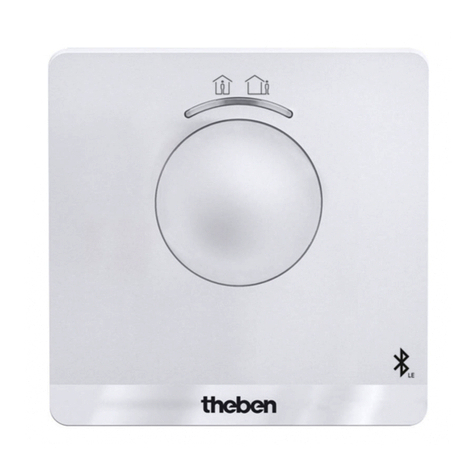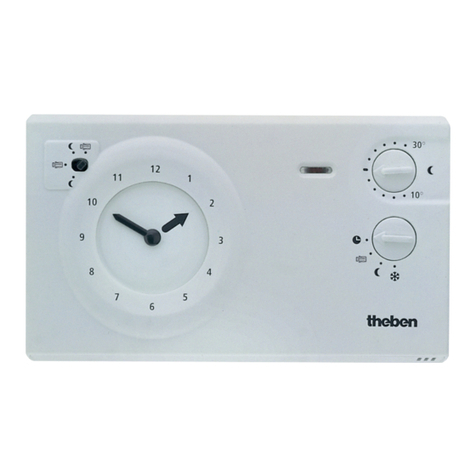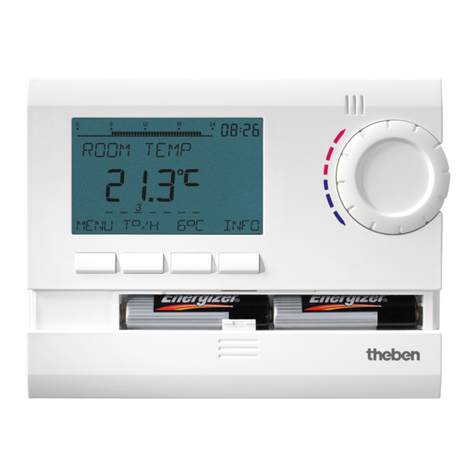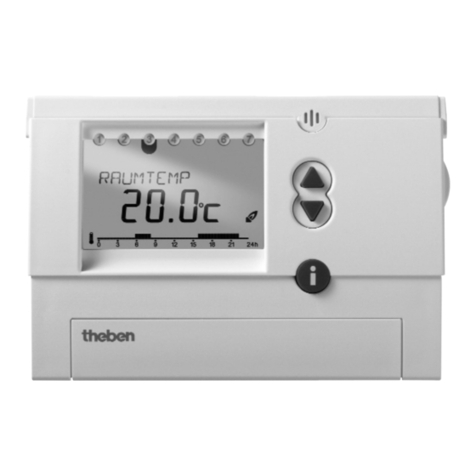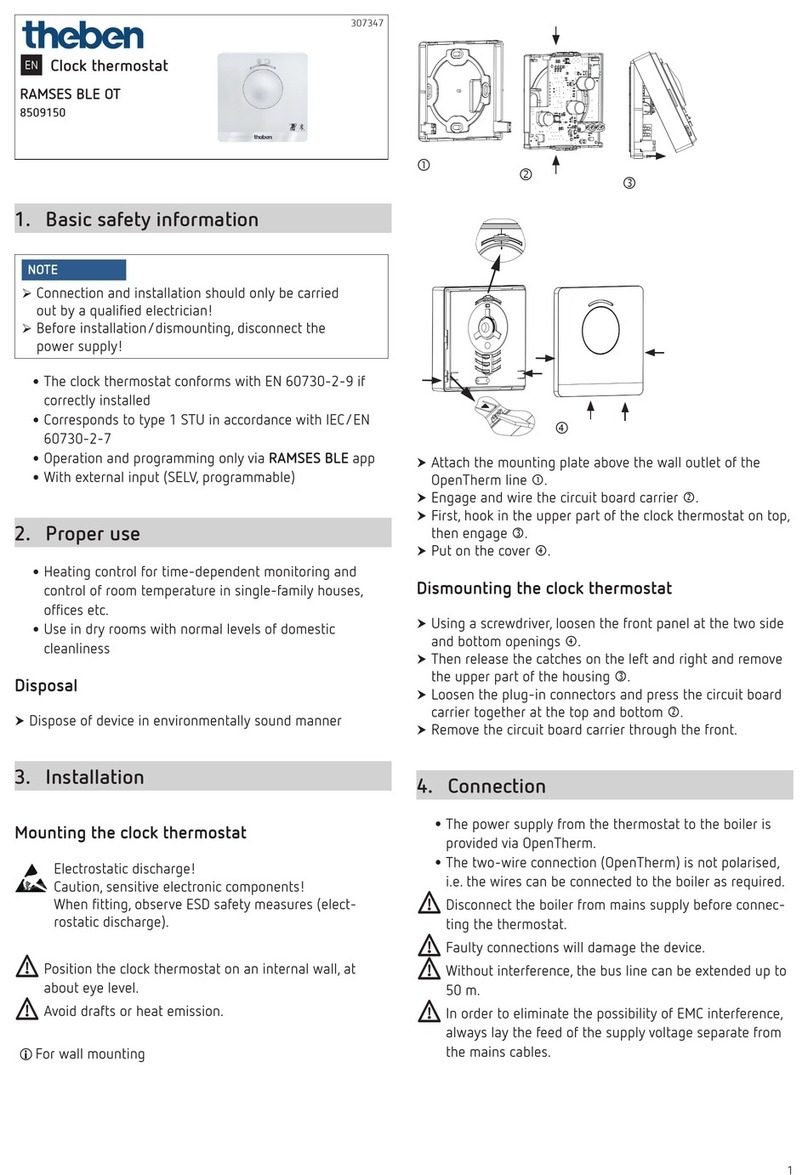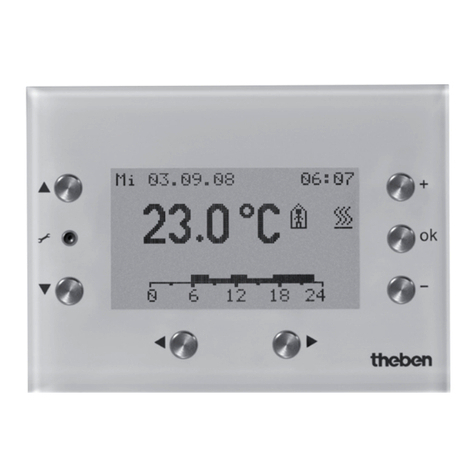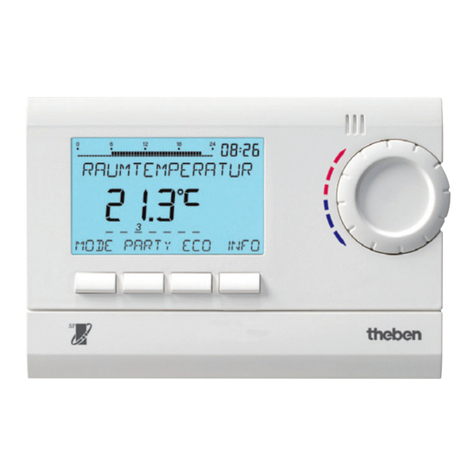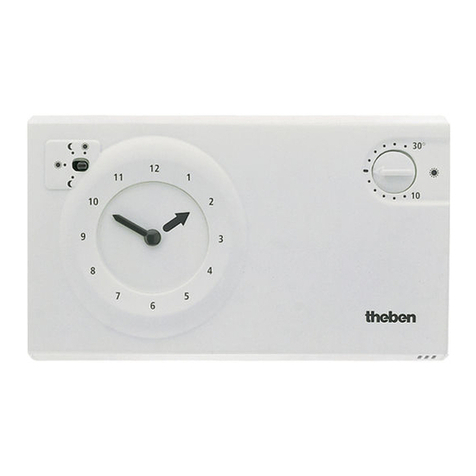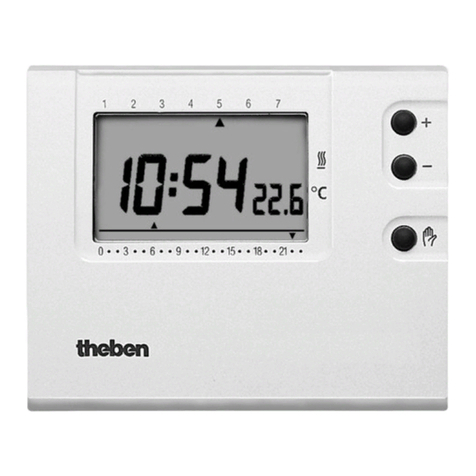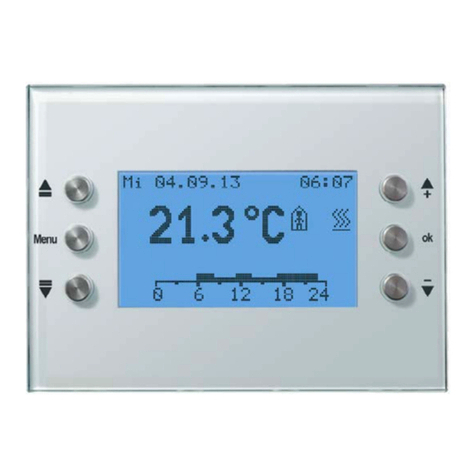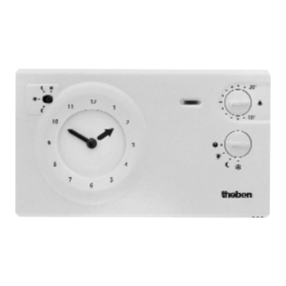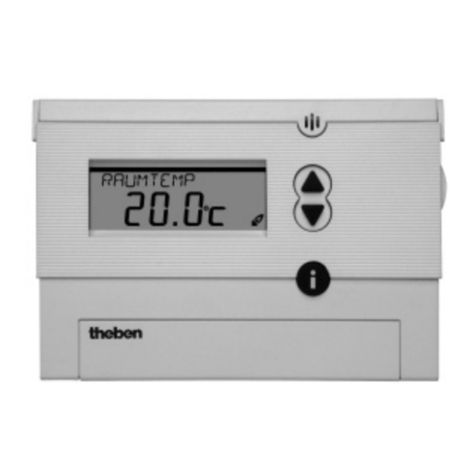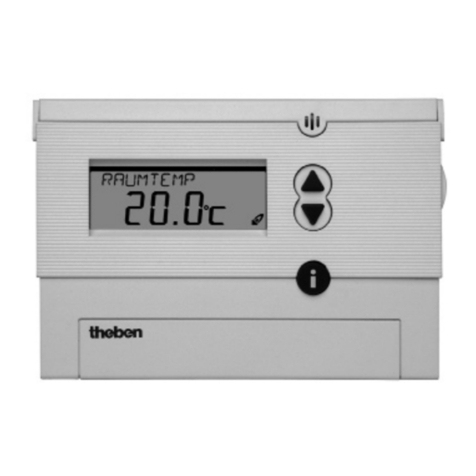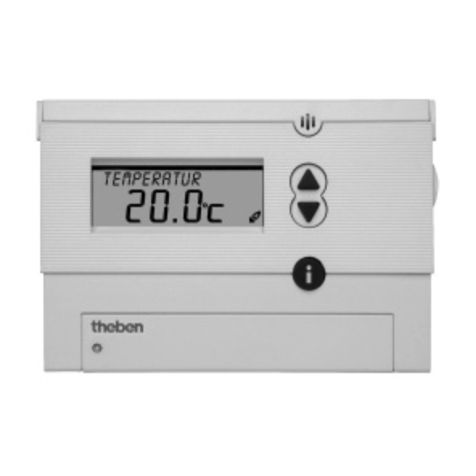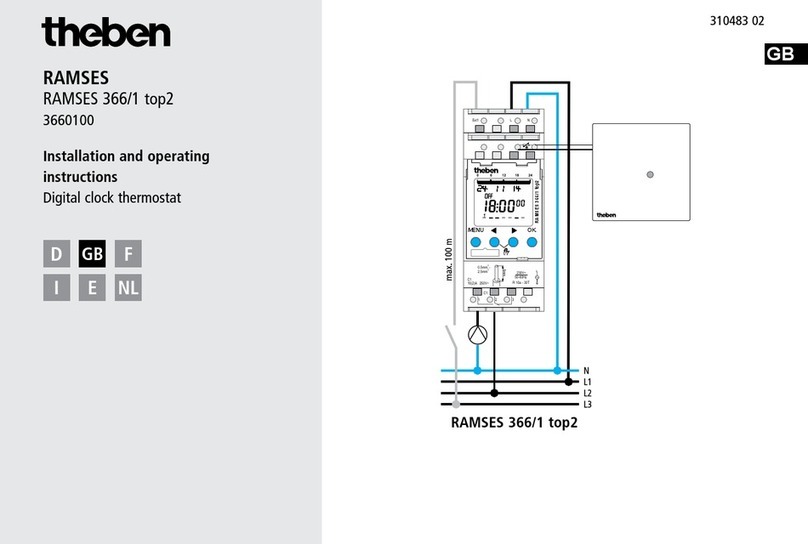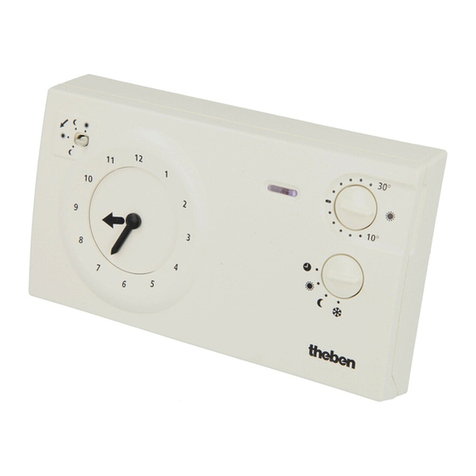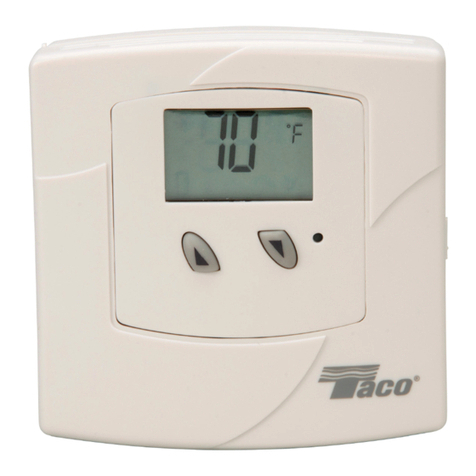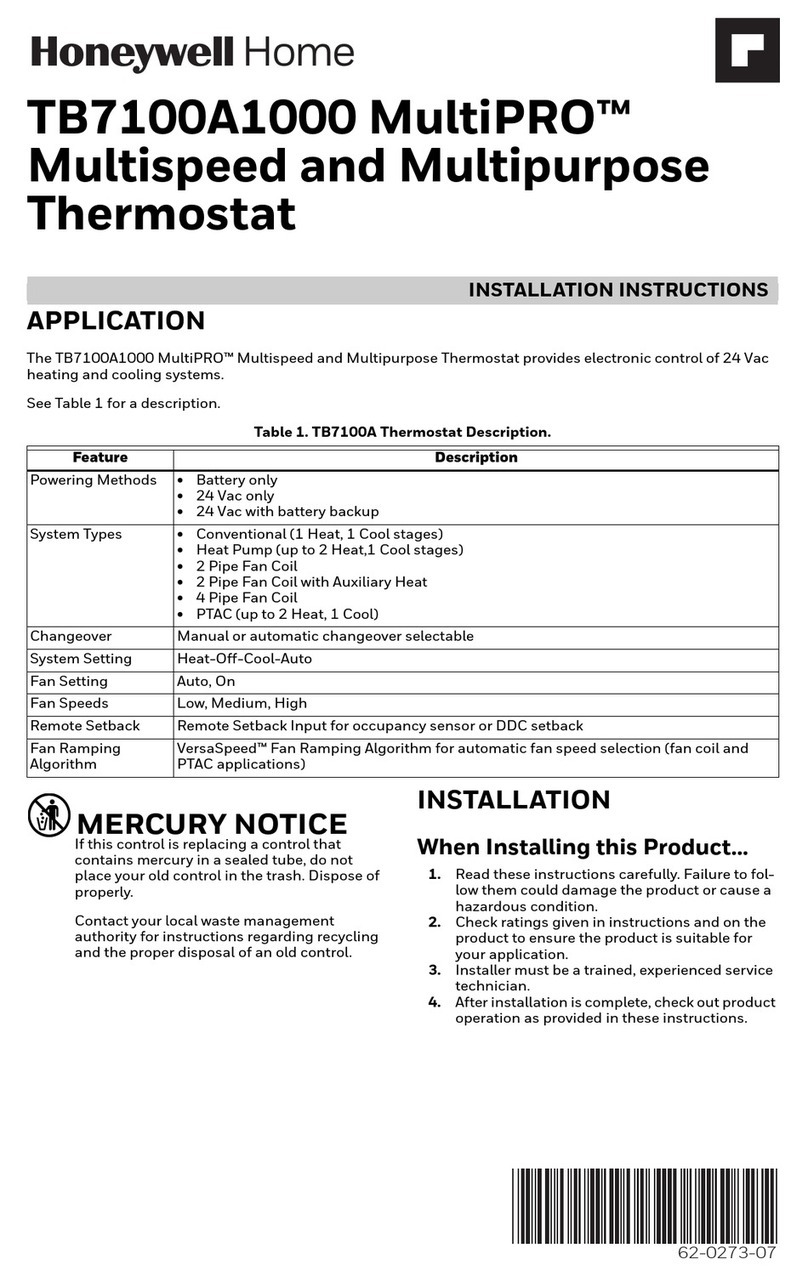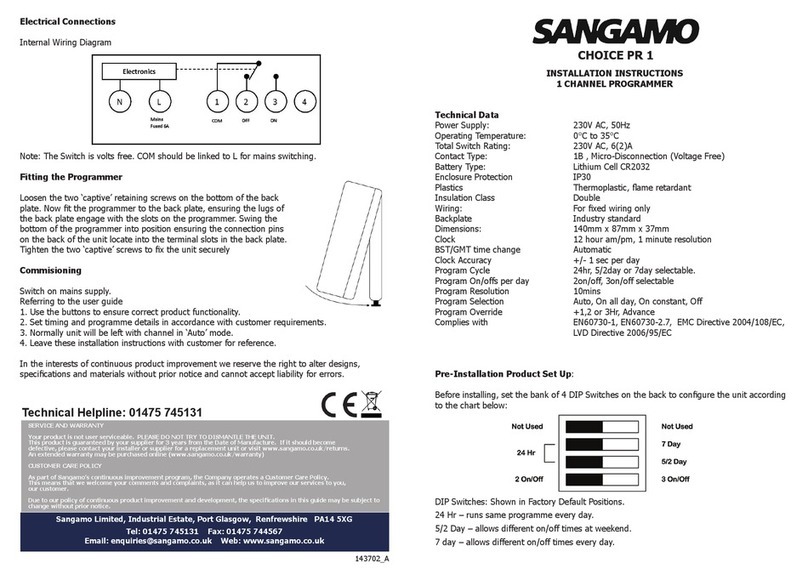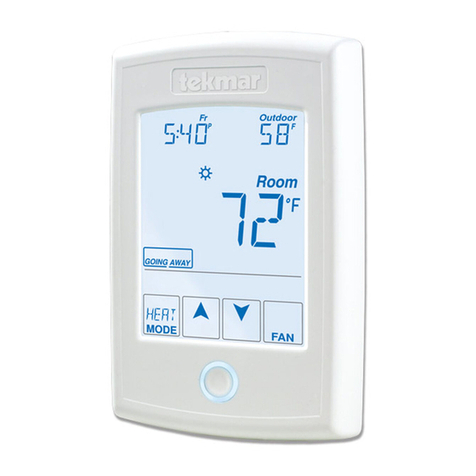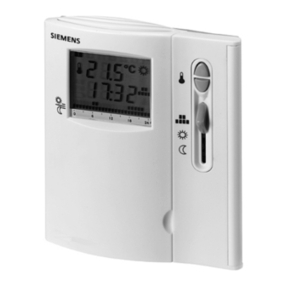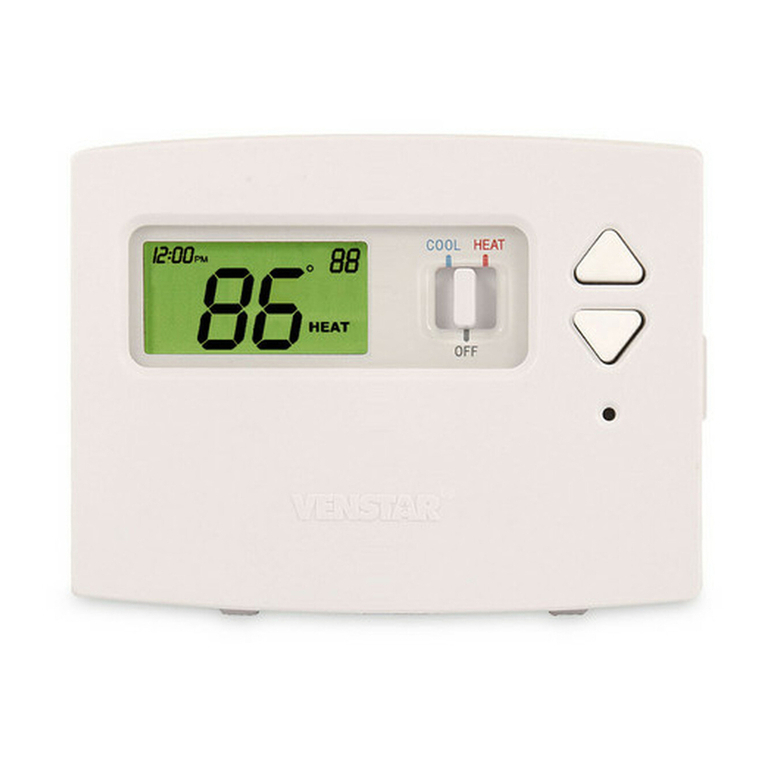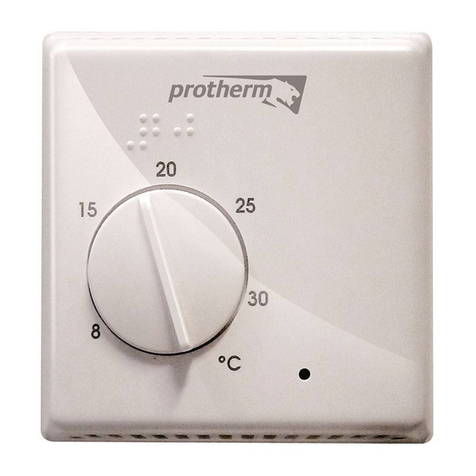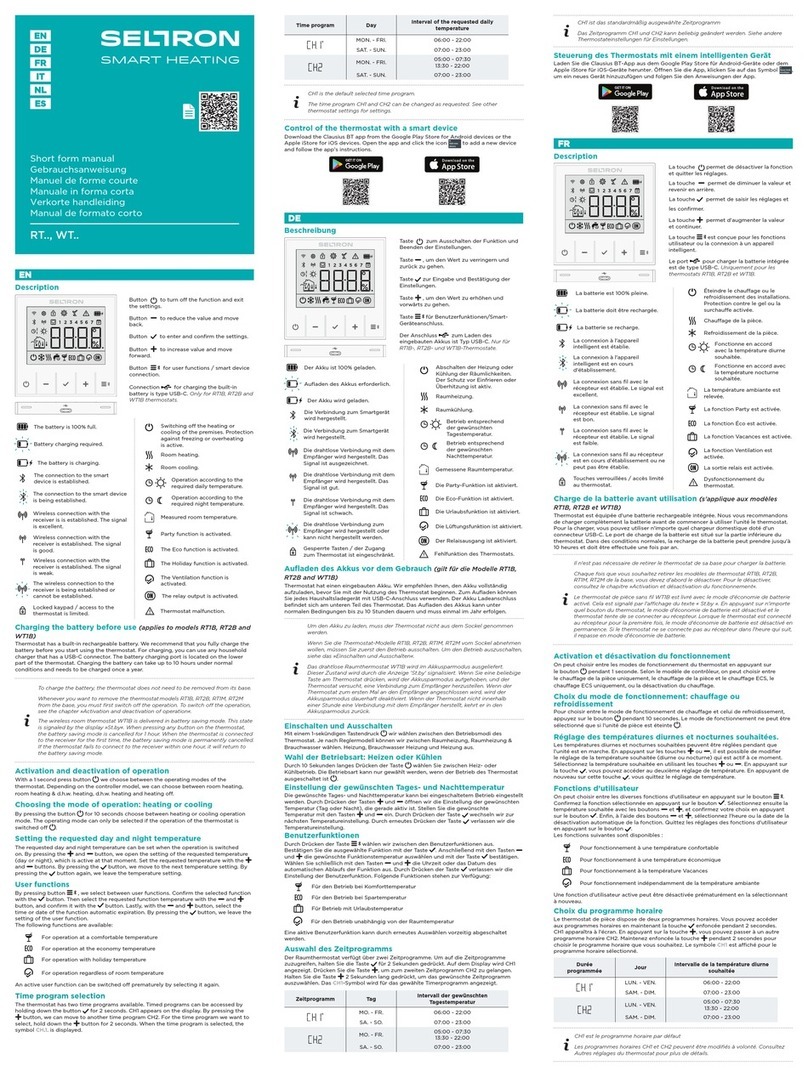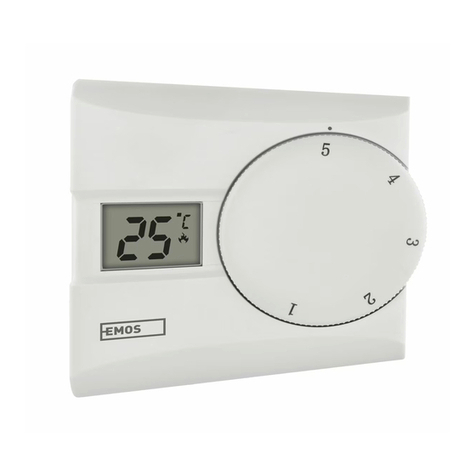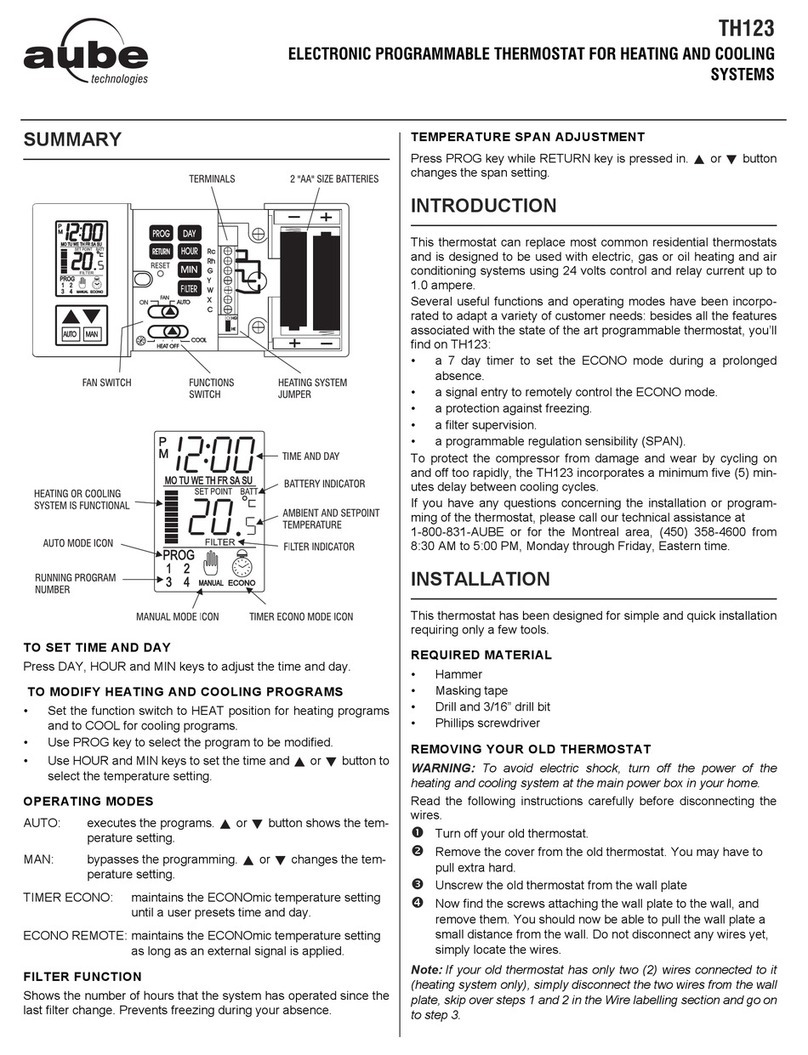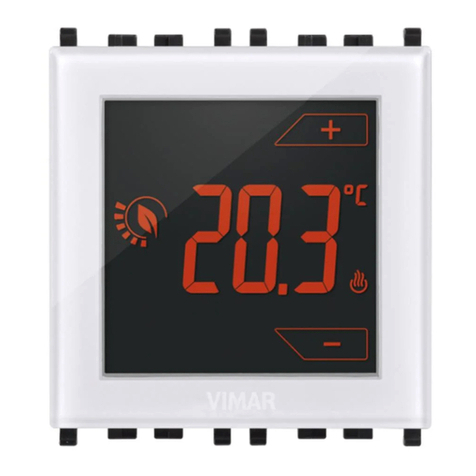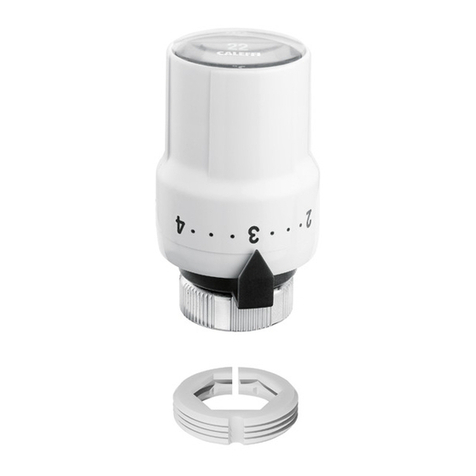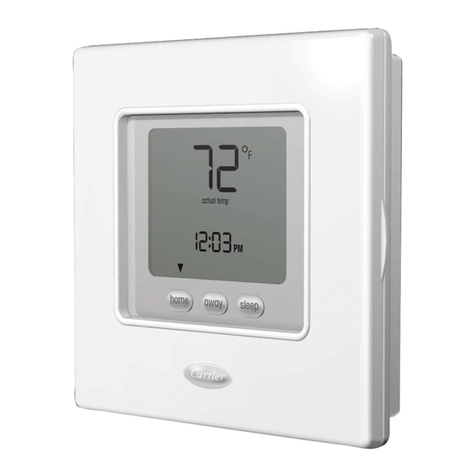
4
In the settings, language, temperature (comfort, eco, frost),
wall compensation, optimisation, etc. can be set.
1. Setting the wall compensation
If the installation location is unfavourable, temperature
deviations between detected and actual room temperature
might occur. This difference can be corrected by using the wall
compensation.
2. Setting the controller
Behaviour of a PD controller (pulse duration controller)
With adapted heating systems, a PD controller is characte-
rised by its short transient time, minimal overshoot and high
control accuracy.
– Control period: 5 bis 30 min
– Control range: ± 0,2 K bis ± 5 K
Behaviour of a hysteresis (on/off) controller
In over or undersized heating systems, a hysteresis controller
is characterised by a minimum switching frequency and low
temperature deviations.
– Switching hysteresis: ± 0,2 K bis ± 1 K
3. External input
The external input can be con gured for various external
sensors.
!Input is active, therefore do not use external voltage.
The connected contact must be oating and electrically
isolated.
The following options are available with the individual sen-
sors/contacts
Floor Temperature
limit
Floor temperature restriction, oor
temperature selection adjustable
between 20 °C and 50 °C; oor sensor
(9070321)
Lno safety temperature limiter, but
device type 1 B in accordance with
EN 60730-1
Room
temperature
no options The internal temperature sensor will
be switched off; external temperature
sensor (IP 65) (9070459)
Presence
detector
Temperature
selection
This temperature is used for control
if the HVAC output of the presence
detector is switched. If no presence is
detected, the set program is used for
control
Window contact no options As long as the window contact is open,
the thermostat controls to frost protec-
tion temperature
Telephone
contact
Temperature
selection
Select temperature for the controller if
the telephone contact is switched
Failure of temperature measurement
Display: „Temperature 35 °C“
▻Short circuit or interruption
▻ Temperature sensor
▻ Emergency operation: relay 15 min on, 15 min off, etc.
▻ Test: internal or external temperature sensor (via exter-
nal input)
4. Setting the optimisation
The optimisation function allows you to achieve a certain
room temperature at a desired switching point. The display
shows how many minutes earlier the heating starts. This time
applies per K of temperature difference between actual tem-
perature and desired set temperature.
Example
At 06.00 a.m. in the morning, a change in the bathroom is
programmed from reduction (17 °C) to comfort temperature
(23 °C).
Without optimisation function, the room thermostat enables
the heating request for the bathroom at 06.00 a.m. Depen-
ding on the size of the room and the installed heating system,
the bathroom reaches the desired 23 °C at 6.30 a.m., for
example.
With a set optimisation of 5 min/K, the thermostat sends the
heating request earlier, as follows:

